Animal Skulls
- Moderate
- Not Messy
- 5-10 Minutes
- Indoor
Overview
You might share some characteristics with a cousin such as eye color or height. Can you tell how closely related you are to some animal species by looking at their skulls? Try it!
Watch the video on YouTube: https://youtu.be/k-AZsFM11dA
You Will Need
Directions
- Watch the video.
- Examine each video in the Animal Relatedness Challenge to determine the characteristics of each animal.
- Click on a checkbox to select the animal that is more closely-related to humans. You will be alerted if you are incorrect and congratulated when you are correct.
- After successfully completing level one, complete the same task with two more levels.
- What did you consider when making your decisions?
Phylogenetic Tree
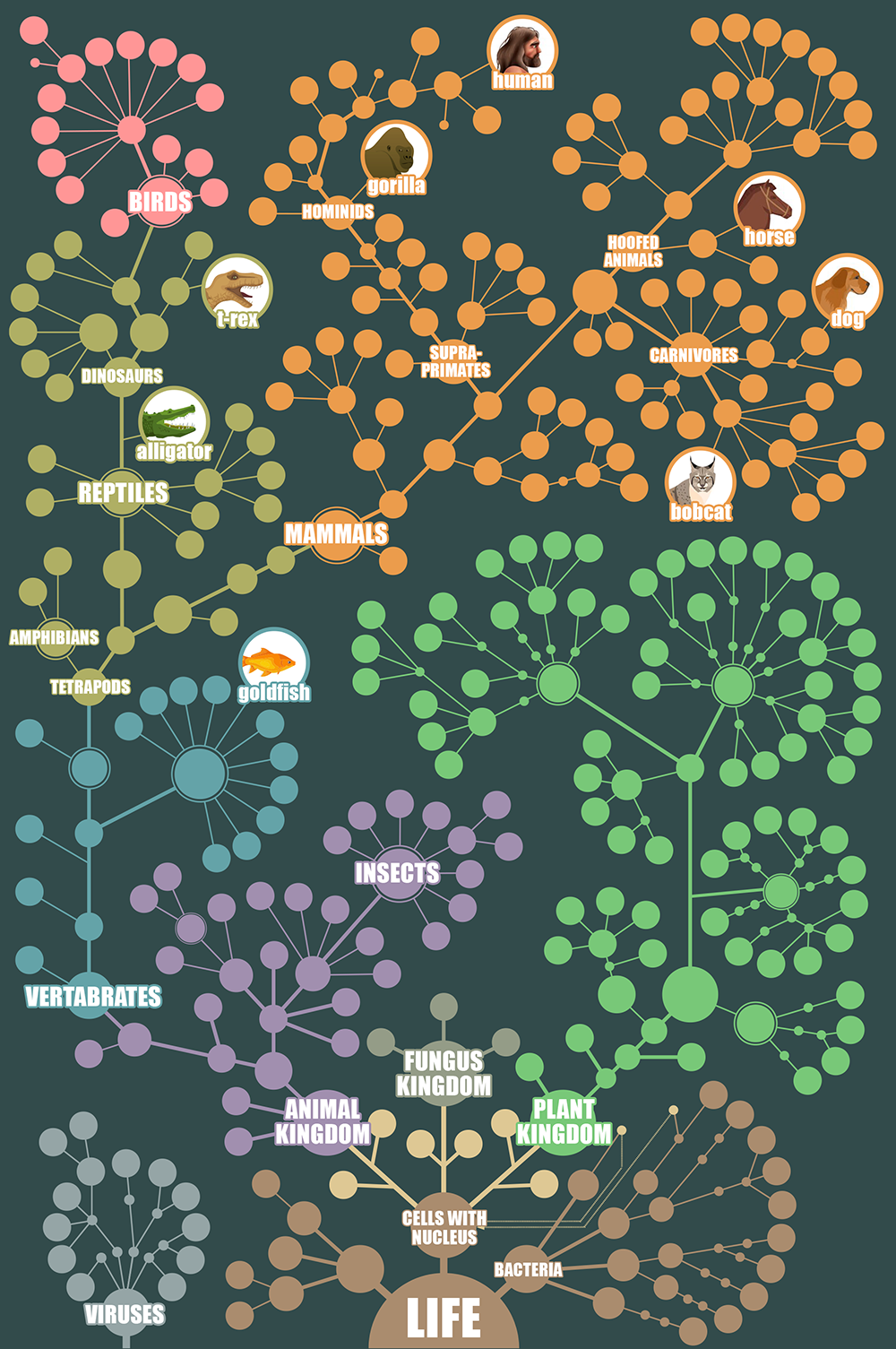
Discovery Questions
After the Exercise
- What made you choose which animal is more closely related to humans?
- Some animals look more like us than others. They might also walk like us or eat similar foods. If you used these similar characteristics, you can infer how closely related different species are to humans. Actual answers will vary based on what the scientist observes.
- After looking at the phylogenetic tree, do you notice similar characteristics of animals that are nearer to each other on the chart?
- The phylogenetic tree is based on evolutionary relationships. The data used to infer those relationships are physical traits, behavioral traits, genetics, as well as genetic information. Actual answers will vary based on what the scientist observes.
- Evolutionary Relationships - Which animal is most closely related to humans?
-
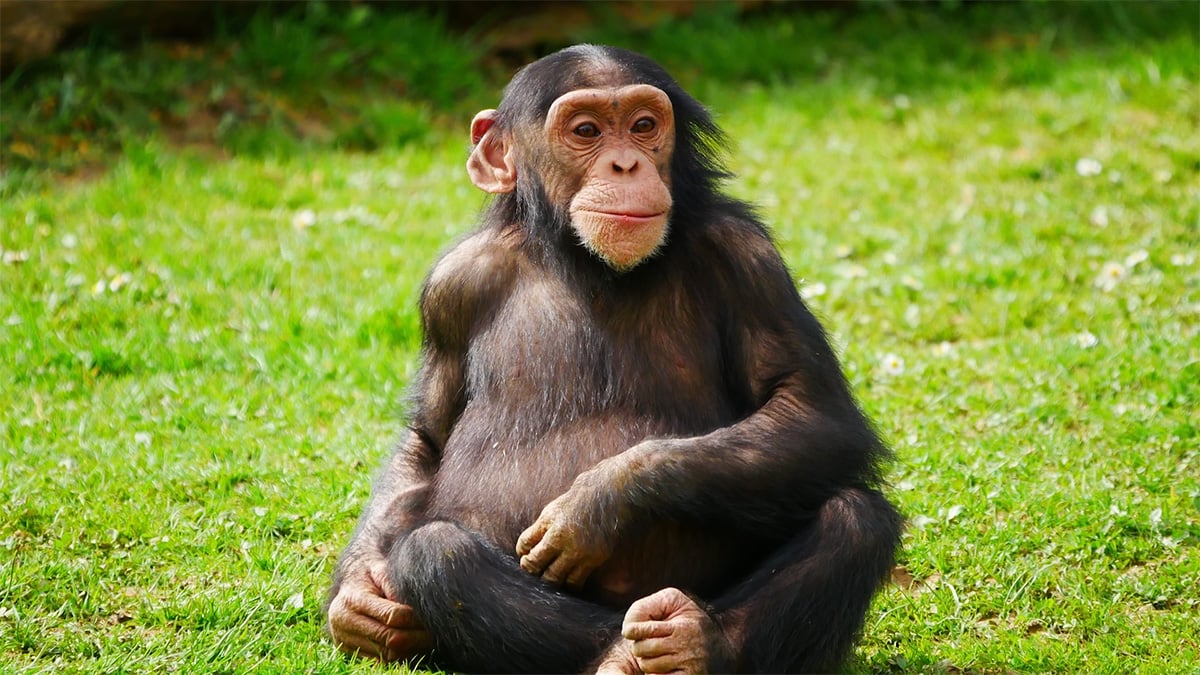
#1 - Chimpanzee
- fur
- mostly move on all fours
- omnivores
- live in groups
- active during the day

#2 - Gorilla
- fur with a hairless face
- live in family groups
- omnivores (eat both plants and animals)
- active during the day
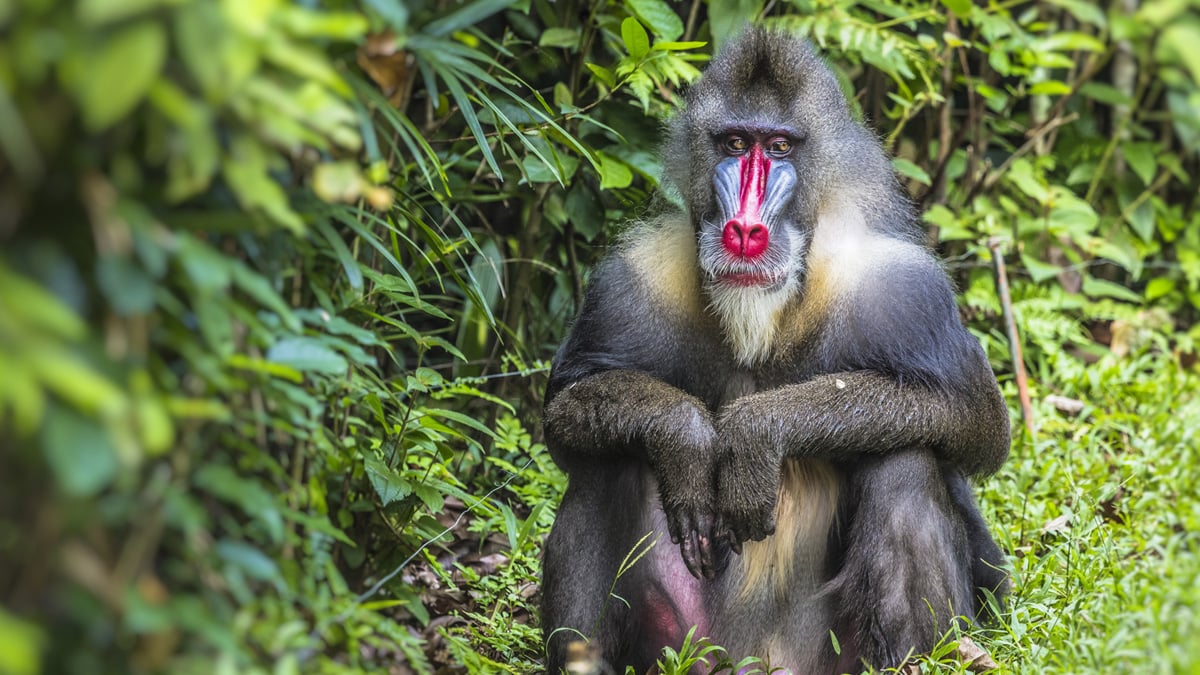
#3 - Mandrill
- fur
- large head and compact body
- colorful face
- walk on all fours
- omnivores
- live in groups
- active during the day
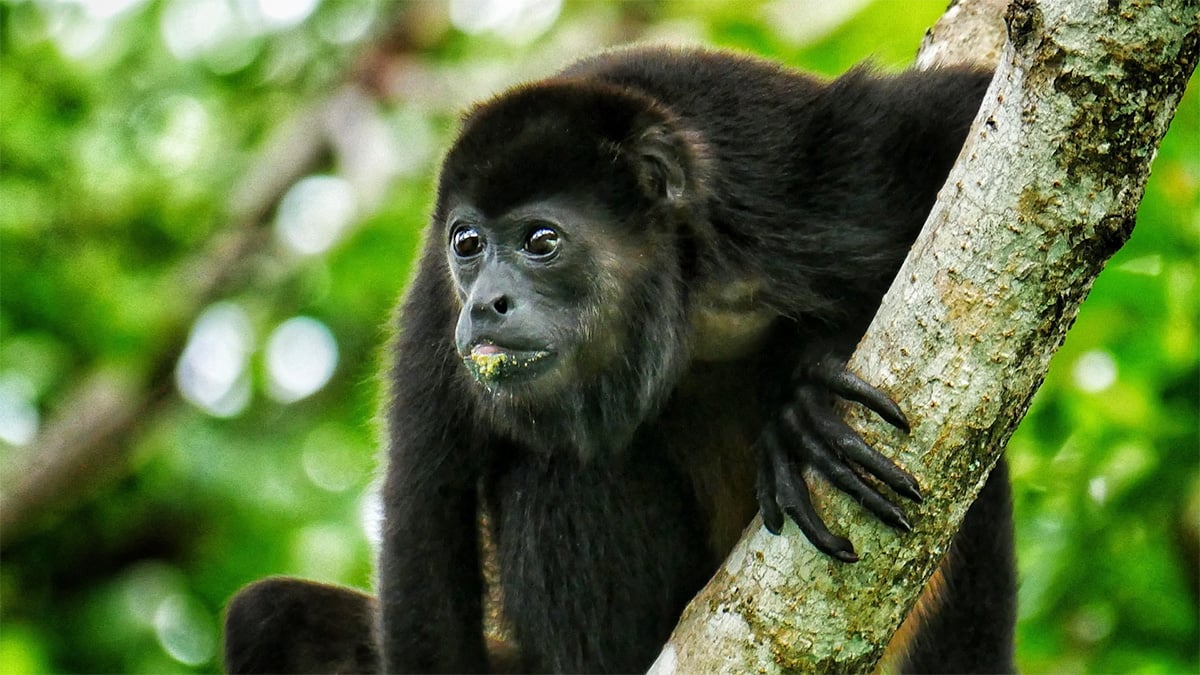
#4 - Howler Monkey
- fur
- hooves
- long slender legs
- run fast
- herbivore
- active during the day
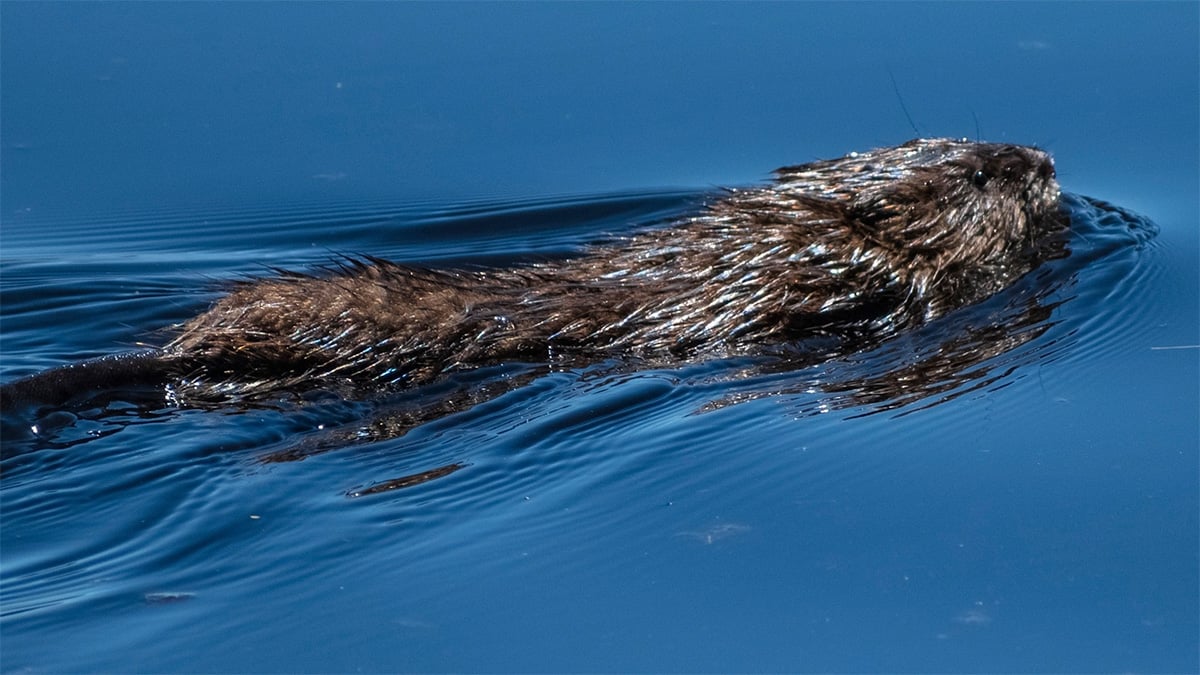
#5 - Muskrat
- fur
- live in wet areas such as swamps and marshes
- live in large families
- omnivores
- active at night
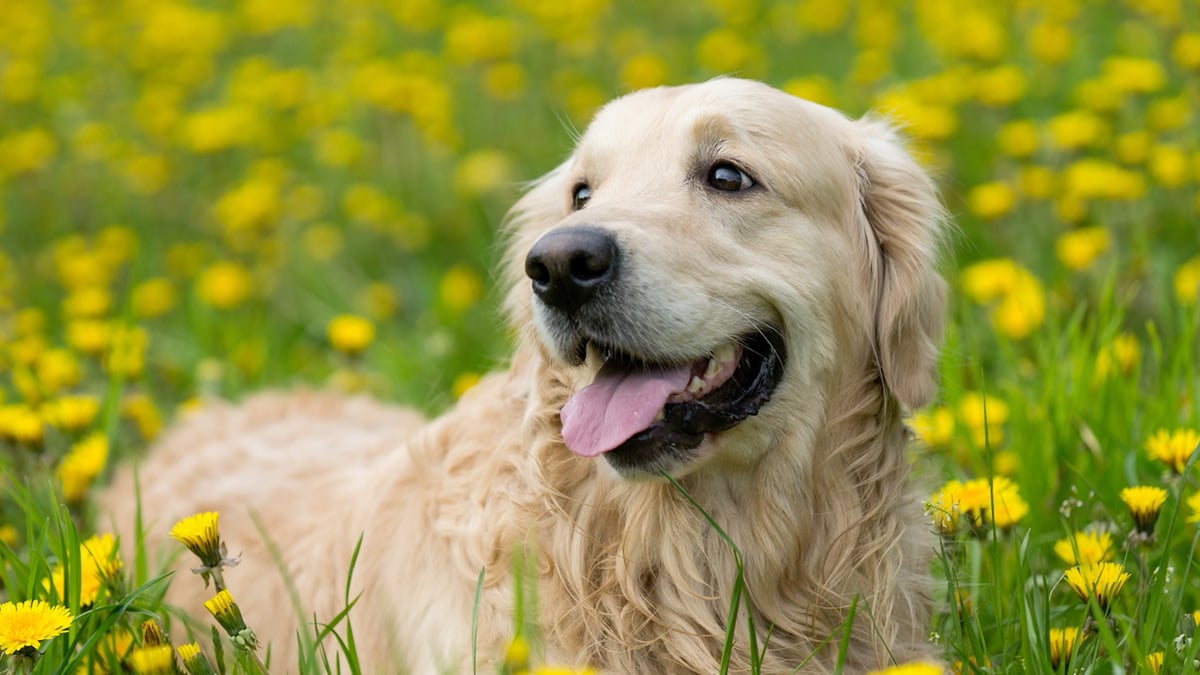
#6 - Dog
- fur
- long slender legs
- run fast
- carnivore
- active during the day
How do scientists classify organisms?
Scientists classify organisms by comparing their traits. We look at what characteristics they have in common and what makes them different to figure out how closely organisms are related. It's like how we share features with our family members.
Animals that look alike, such as zebras and horses, are usually closely related. Scientists compare things such as bone shapes, teeth, and eye socket size to see if organisms share similar traits and might be related.
Genetics also helps scientists understand evolutionary relationships. If animals have similar genetic sequences, they might be more closely related. However, there are still some relationships that scientists disagree on.
All of this data can be brought together on a phylogenetic tree, such as the example above to illustrate how organisms may be related to each other.
Key Words
- Organism
- There is some disagreement on the best way to define an organism. A common way is to define it as any living, biological system that can function as an individual life form (e.g. an animal, plant, or fungus among others).
- Classification
- Arranging organisms in groups according to similarities.
- Genetics
- Relating to characteristics controlled by DNA or genes.
- Phylogenetic Tree
- A diagram that shows the evolutionary relationship between different organisms over a specific time period.
- Mammals
- Animals with hair that nourish their young with milk.
- Evolutionary Relationships
- Relationships based on organisms with shared ancestry.
- Rodents
- Small gnawing mammals such as squirrels and mice that are known for their teeth.
- Carnivores
- Animals with long, sharp canine teeth that only eat meat.
